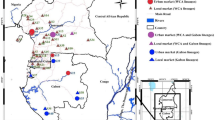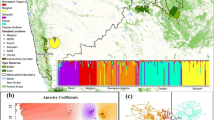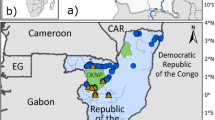Abstract
Many aspects of the historical relationships between populations in a species are reflected in genetic data. Inferring these relationships from genetic data, however, remains a challenging task. In this paper, we present a statistical model for inferring the patterns of population splits and mixtures in multiple populations. In this model, the sampled populations in a species are related to their common ancestor through a graph of ancestral populations. Using genome-wide allele frequency data and a Gaussian approximation to genetic drift, we infer the structure of this graph. We applied this method to a set of 55 human populations and a set of 82 dog breeds and wild canids. In both species, we show that a simple bifurcating tree does not fully describe the data; in contrast, we infer many migration events. While some of the migration events that we find have been detected previously, many have not. For example, in the human data we infer that Cambodians trace approximately 16% of their ancestry to a population ancestral to other extant East Asian populations. In the dog data, we infer that both the boxer and basenji trace a considerable fraction of their ancestry (9% and 25%, respectively) to wolves subsequent to domestication, and that East Asian toy breeds (the Shih Tzu and the Pekingese) result from admixture between modern toy breeds and ``ancient" Asian breeds. Software implementing the model described here, called TreeMix, is available at "http://treemix.googlecode.com":http://treemix.googlecode.com.
Similar content being viewed by others
Article PDF
Author information
Authors and Affiliations
Corresponding author
Rights and permissions
About this article
Cite this article
Pickrell, J., Pritchard, J. Inference of population splits and mixtures from genome-wide allele frequency data. Nat Prec (2012). https://doi.org/10.1038/npre.2012.6956.1
Received:
Accepted:
Published:
DOI: https://doi.org/10.1038/npre.2012.6956.1
Keywords
This article is cited by
-
Whole genome sequencing reveals signals of adaptive admixture in Creole cattle
Scientific Reports (2023)
-
Non-ultrametric phylogenetic trees shed new light on Neanderthal introgression
Organisms Diversity & Evolution (2023)
-
Genomic evaluation of hybridization in historic and modern North American Bison (Bison bison)
Scientific Reports (2022)
-
Whole-genome resequencing of Chinese pangolins reveals a population structure and provides insights into their conservation
Communications Biology (2022)
-
Genomic basis of insularity and ecological divergence in barn owls (Tyto alba) of the Canary Islands
Heredity (2022)



